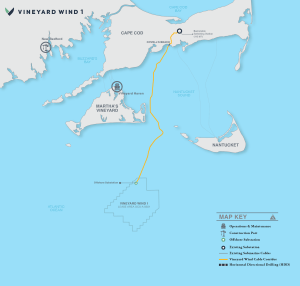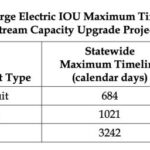Facing a series of costly physical problems and a becalmed market, GE Vernova, the largest offshore wind turbine developer in the U.S., has informed European authorities that it plans to lay off up to 900 workers around the world as it scales back its offshore business. The Maritime Executive reported that the General Electric wind development spinoff notified the European Works Council for France of its planned downsizing.

Under EU law, member states have established councils to “facilitate the information and consultation of employees with a focus on transnational issues….” A third or more of the cuts could come in the U.S. company’s two plants in France.
In an emailed statement, Cambridge, Mass.-based Ge Vernova said, “On 19 September 2024 we submitted a proposal to our European Works Council related to proposed changes in our offshore wind business globally. The proposal reflects industrywide challenges for wind and aims to transform our offshore wind business into a smaller, leaner and more profitable business within GE Vernova.”
The once-giant conglomerate General Electric spun off its electric generating subsidiaries GE Power and GE Renewable Energy into GE Vernova (NYSE:GEV) in April. The company has sold some 55,000 wind turbines now in service and 7,000 gas turbine generators. While the overall company is profitable, with predicted 2024 revenues of $34-$35 billion.
But wind power problems have hit the company in the third quarter, Ge Vernova said, producing flat earnings for the year. The company news release said, “The Wind segment is now expected to generate an approximately $300 million EBITDA loss in the third quarter 2024 given these costs, despite Onshore Wind delivering a fifth straight quarter of profitability. The company expects the wind segment to be modestly profitable in the fourth quarter.” The company reported a $117 million loss for the offshore wind business in the 2024 second quarter.
Earlier this year, GE Vernova dropped development of its 18-MW Halide offshore wind turbine, deciding to focus on its existing 13-MW and 15-MW machines. The Maritime Executive said, “The retrenchment was cited as the reason New York State canceled three selected projects that planned to use the larger turbines.”
Then on July 13, a blade on a 13-MW turbine shattered at the operating and under construction 804-MW Vineyard 1 project some 15 miles off Nantucket Island, spreading debris that washed up on the island and onshore on Cape Cod. The U.S. Interior Department shut the project down.
Then on Aug. 22 at the UK’s Dogger Bank offshore project — at 3.6 GW the world’s largest developing wind farm — a blade on a Halide turbine failed during commissioning, causing further headaches for GE Vernova. Bloomberg commented, “This was the latest failure by a GE Vernova blade in recent months — the string of incidents have been a public black eye for the company’s struggling offshore wind business. Another blade failed at the same Dogger Bank project in May, while a July failure at the Vineyard Wind project in the US led to shards of fiberglass washing ashore and closing beaches in one of the Northeast’s most expensive vacation destinations.”
GE Vernova’s offshore retreat may be good news for its competitors for the U.S. market. Denmark’s Vestas Wind System has just won an 816-MW order to power New York’s Empire 1 wind project with its 15-MW turbines, marking the company’s first offshore U.S. order. According to Vestas, the order includes “supply, delivery, and commissioning of the turbines, as well as a five-year comprehensive service agreement….”
Empire 1 was supposed to be the first of a two-phase, 2 GW project being developed by Norway’s 67% state owned Equinor along with BP, to supply power to the New York Power Authority, the Long Island Power Authority, and Con Edison. Equinor and BP tossed the second phase overboard in January, explaining, “This agreement reflects changed economic circumstances on an industry-wide scale and repositions an already mature project to continue development in anticipation of new offtake opportunities.”
Offshore wind in the Northeast has been struggling. Reuters reported last November, “Offshore wind developers have threatened in recent months to cancel contracts to sell power in New York after earlier dropping agreements in Massachusetts, Connecticut and New Jersey as soaring inflation, interest rates and supply chain problems led to much higher costs to build projects than anticipated.
“European energy companies Orsted, Equinor and BP have taken a combined $5 billion of writedowns on U.S. offshore wind projects that are mostly in development, in part because their existing power sales contracts would not cover the cost of building and financing the projects.”
Kennedy Maize
The Quad Report
To comment:
kenmaize@gmail.com




